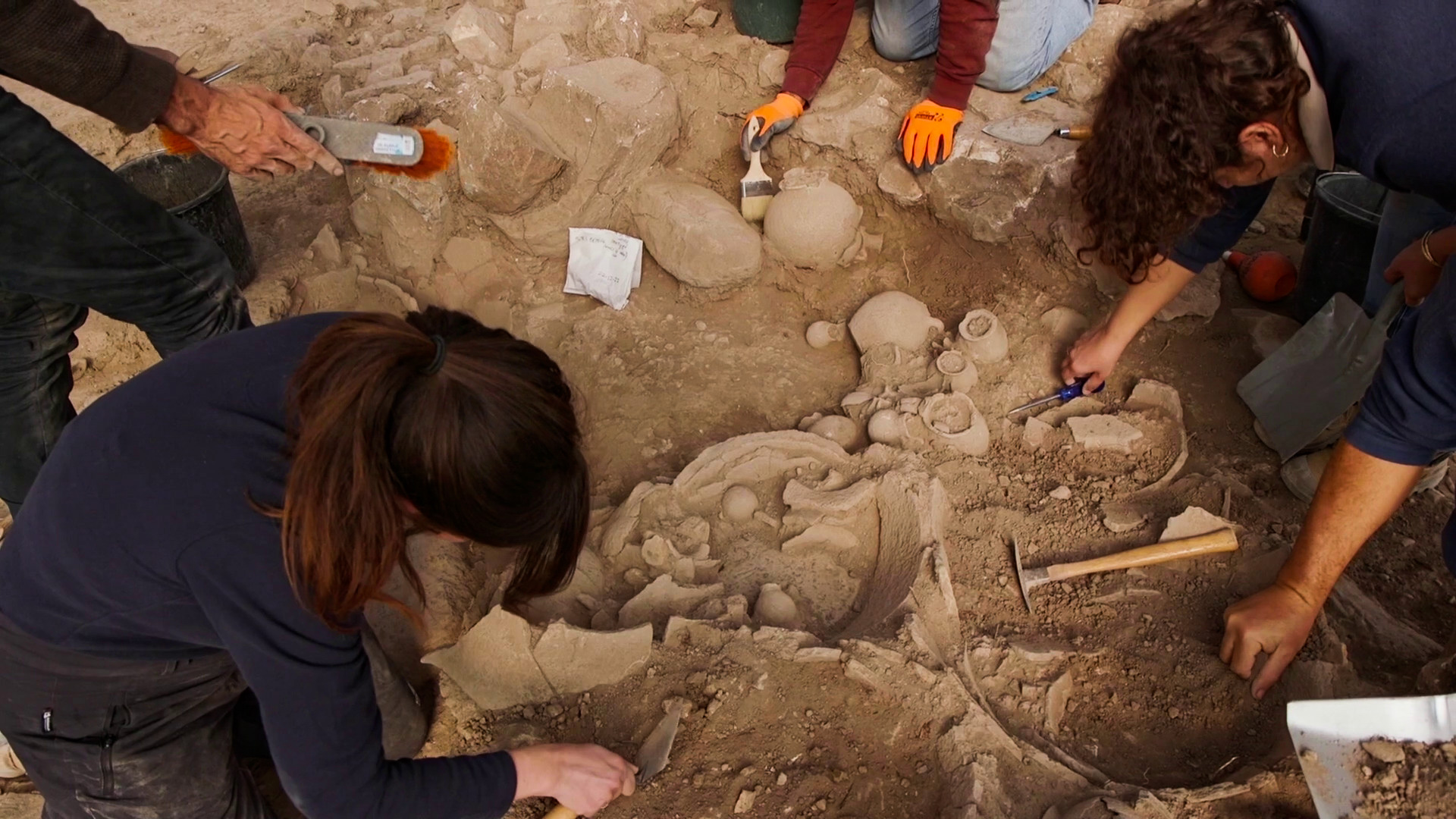Rare Bronze Age ceremonial artifacts uncovered near Beit Shemesh

During a recent excavation near Beit Shemesh, just west of Jerusalem, a rare collection of ceramic vessels and a pottery kiln dating back to the Early Bronze Age was discovered.
The Israel Antiquities Authority (IAA) noted that the vessels, most likely used in cultic temple rituals, were found in a large, public building of an ancient settlement now called "Hurvat Husham."
The site is located on the outskirts of Beit Shemesh, the town where the Philistines returned the ark of the covenant in 1 Samuel.

The discovery revealed “about 40 vessels preserved intact. Among them were also many tiny vessels, whose size suggests they were not for domestic use, but rather had a mainly symbolic purpose,” the IAA said.
“Comparison with the few known buildings of this type produces the conclusion that this is probably one of the earliest temples ever discovered in the Judean Lowlands,”
These “miniatures are very small and not very functional for everyday use such as cooking or storage,” one excavation manager said. The ceramic vessels were left in “this specific room. It seems someone collected these vessels, arranged them nicely, and then left. We don’t know why… It’s very unusual,” he added.
The directors noted that the room showed signs of burning and vessels that had fallen on top of one another and that additional laboratory examinations would reveal what kinds of material these vessels held, such as oil, water, wheat, or more exotic substances used during rituals.

The Early Bronze Age is considered by researchers to be one of the most complex in Israel’s history because of the significant changes in population and social complexity that led to a more urban hierarchy of power structures.
Archaeologists have uncovered large walled cities, palaces and public buildings from just a few hundred years later at Tel Yarmouth, a site near modern Beit Shemesh, about 20 miles from Jerusalem.
Hurvat Husham was “on the way to becoming a city… we believe that the population was a little more than a thousand at best,” one of the excavators said.
While the inhabitants of the site are unknown, archaeologist Ariel Shatil, a graduate student at the University of Haifa, says it may have been the ancestors of the biblical Canaanites.
“It’s a very ancient period, and they didn’t leave much” in the way of written materials, Shatil said, noting the possibility that these were “among the people who developed into what we know as Canaanites, but we really don’t know.”
The Canaanites, characterized in the Hebrew Bible as the enemies of the Israelites, are generally considered by archaeologists and historians to have emerged around 2000 B.C.E., about a millennium after the recently excavated settlement.
The archaeologists found rows of large standing stones next to and around the building, set in place “even before this enclosed public building was erected,” the researchers noted.
“It seems that originally there was an open cultic activity area for the general public, which then transformed into ritual activity in an enclosed compound with more controlled access,” said Dr. Yitzhak Paz, IAA's Early Bronze Age expert.
“This development process on the site, along with other processes, attests to an increase in social complexity,” indicating the urbanization development that took place during that time, Paz added.
The excavators say the site reveals some of the first characteristics of the transition from village life to urban life.
According to IAA Director Eli Escusido, the land of Israel was “fertile ground for the development of ancient civilizations.” The Hurvat Husham site uncovered by the researchers “reveals another important piece in the puzzle of urban development in our region.”
Some of the vessels discovered were among the oldest to be showcased last Wednesday and Thursday during public guided tours at the Jay and Jeanie Schottenstein National Campus for the Archaeology of Israel.

The All Israel News Staff is a team of journalists in Israel.













